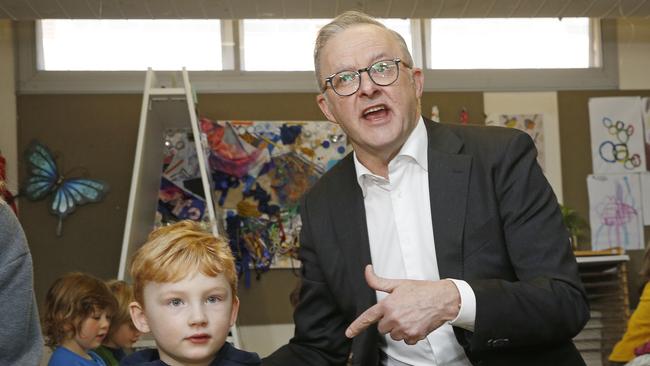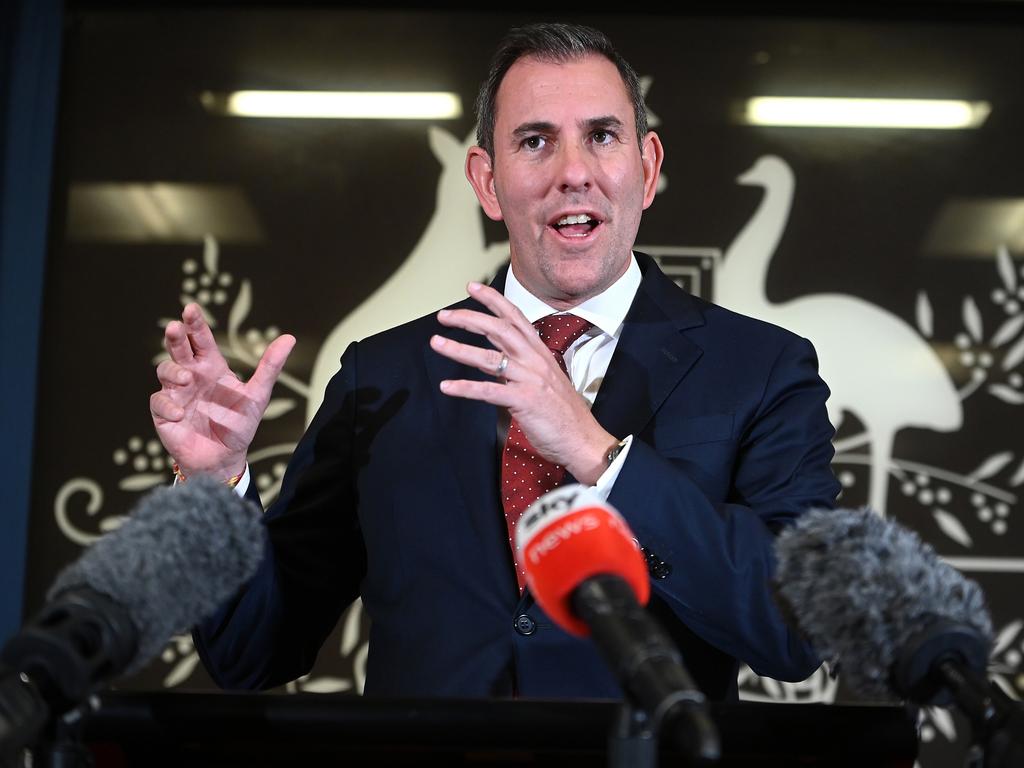Disability workers push for pay rise after taxpayers raise wages for childcare and aged care staff
Nearly 300,000 disability workers will demand taxpayers fund an above-inflation pay rise in the wake of $15bn in wage increases given to childcare and aged-care staff.

Nearly 300,000 disability workers will demand taxpayers fund an above-inflation pay rise in the wake of $15bn in wage increases given to childcare and aged-care staff, piling more pressure on the Albanese government’s ability to rein in inflation.
As Anthony Albanese locks horns with the Reserve Bank over its warnings that galloping government spending will keep interest rates higher for longer, four unions have joined in a Fair Work Commission application to boost the pay of 270,000 disability workers in the National Disability Insurance Scheme.
Australian Services Union secretary Angus McFarland said the pay rise would need to be higher than inflation – now running at 3.8 per cent – although unions had not yet decided how much to claim. “They deserve a pay increase to reflect the fact their work has become more complex, skilled and with more responsibility under the NDIS,’’ he said.
“A quarter of workers are leaving the sector every year and by fixing the pay we can stabilise the workforce.’’
Mr McFarland said disability workers had sought a 5 per cent pay rise last year, but the FWC had granted them 3.75 per cent.
He said the FWC would hear the joint claim from the ASU, the Australian Workers Union, the Health Services Union and the United Workers Union in December.

The Albanese government spent $11.1bn last year to directly fund a 15 per cent pay rise for aged-care staff, which kicked in last month.
On Thursday Mr Albanese announced a $3.6bn wage subsidy to give 200,000 childcare staff a 10 per cent pay rise in December, with a further 5 per cent rise in December 2025.
Despite warnings from the Reserve Bank that government spending could fuel inflation and lead to higher interest rates, Mr Albanese defended the childcare pay rise.
He said an ongoing shortage of childcare workers would “damage the entire economy’’.
“Every analysis says that if you continued to underpay workers … people would continue to leave the sector,’’ he said on Friday.
“(Then) people who rely upon dropping their kid off (to a centre) wouldn’t be able to continue in their work.
“The downward spiral in productivity for the economy would be very damaging.’’
The childcare pay rise will lift the starting wage from $24.80 to $27.32 per hour – more than aged-care workers ($25.85 per hour) or retail workers ($26.24).
The minimum pay for disability workers is already $33.41 per hour, thanks to a 23 per cent pay rise granted by the Gillard Labor government 12 years ago.
The minimum wage is $24 per hour, and average earnings are $44 per hour.
NDIS Minister Bill Shorten said that disability support workers “do a very important job and are among the biggest winners out of Labor’s July 1 tax cuts’’.
“I’m aware unions and employers are considering wage matters through the FWC and I won’t pre-empt them,’’ he said.
“It should be acknowledged that since Labor came into government, disability support workers’ wages have increased nearly 15 per cent.’’
News of another taxpayer-funded pay push sparked concern from leading economists about increased government spending and the structural deficit now facing the nation. Judo Bank chief economist Warren Hogan said that government spending “is rising to its highest levels ever’’.
“Spending increased by over 4 per cent in real terms last year, and this year it’s 3 per cent again,’’ he said.
“So basically, we’re in structural budget deficit, the government is spending more than it makes.
“Government spending as a share of GDP is a record high, and that worries me.
“Are we going down the path of Europe or other countries where we just run deficits and government grows?”
Independent economist Saul Eslake said the structural balance was deteriorating “because this government and previous governments have taken conscious decisions to increase spending and cut taxes’’.
“The tax cut position was actually made by the Morrison government … and this government rejigged it,’’ he said.
“Additionally, in the federal budget, the government consciously decided to increase spending in a range of areas.“
According to the Treasury, the structural budget balance was in deficit in 2023-24 and will be in the red every year until 2034-35.
The structural budget balance moved from a surplus of 0.3 per cent of GDP in 2022-23 to an estimated -0.3, a deficit, in 2023-24 and to -1 as a percentage of GDP in 2024-25 and -1.2 in 2025-26.
Mr Hogan said “big government’’ risked worsening labour shortages in the private sector.
“Certainly in a war of labour shortages, an ever-growing government sector risks crowding out the private sector from the labour market and we’ve never even considered that in the past,” he said.
“Businesses will not grow and will not invest, and therefore that’ll limit their ability to generate productivity.”
Mr Eslake blamed state government “spending on infrastructure (using) borrowed money’’ was exacerbating skills shortages in the construction sector.
He said builders were warning that “one of the biggest reasons why housing starts are falling so … short is because they can’t find skilled trades people’’.
“State governments are paying those skilled trades people much more than they can afford to,’’ he said.
Despite concerns that the “care economy’’ wage rises will drain workers out of other low-paid industries such as cleaning, retail and hospitality, the Parenthood chief executive Georgie Dent said childcare was an essential service.
“Early childhood educators need to be turning up and services need to be running so a whole lot of other essential workers can continue in their essential roles,’’ she said.
“We’ve had services closing altogether, capping enrolments and closing rooms because they can’t get enough staff.’’
The RBA revealed this week that it now expects public demand to increase by 4.3 per cent in the year to December 2024 – nearly double its previous estimate.
Its latest statement on monetary policy said the “stronger outlook on public demand reflects ongoing spending and recent announcements by federal and state and territory governments’’.
Mr Albanese said his government had produced two budget surpluses in a row – “more than our predecessors produced in almost a decade’’.
“What (RBA governor) Michele Bullock has actually said is that the Reserve Bank’s job is to look after inflation, which it is,’’ he told Nova Perth on Friday.
“The government’s job is to look after inflation, but it’s also to look after people.
“The economy benefits (from the childcare pay rise) because women can go back to work earlier, or they might work an extra day or two.
“That is how you design economic policy in a way that helps people but also puts that downward pressure on inflation.’’







To join the conversation, please log in. Don't have an account? Register
Join the conversation, you are commenting as Logout